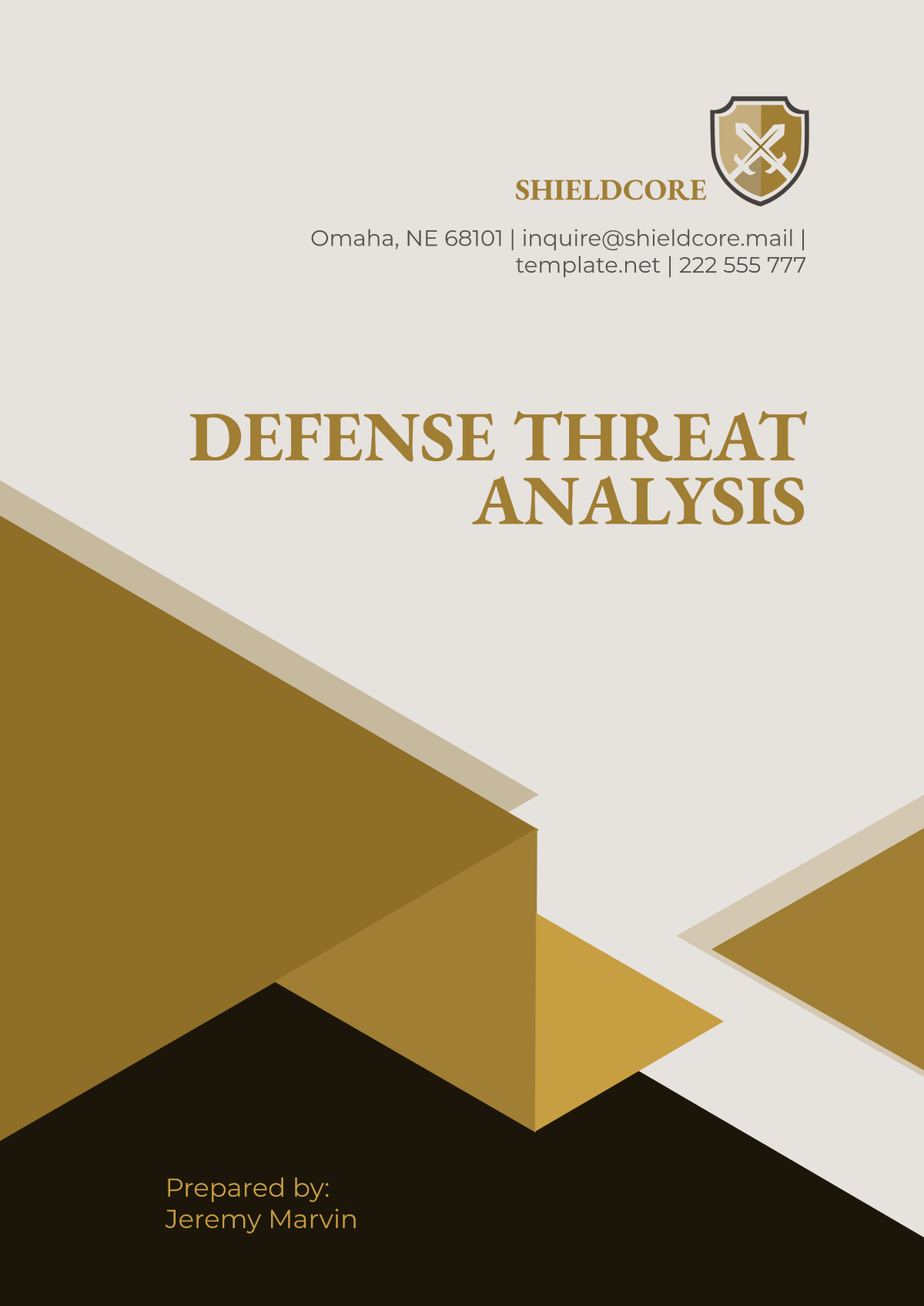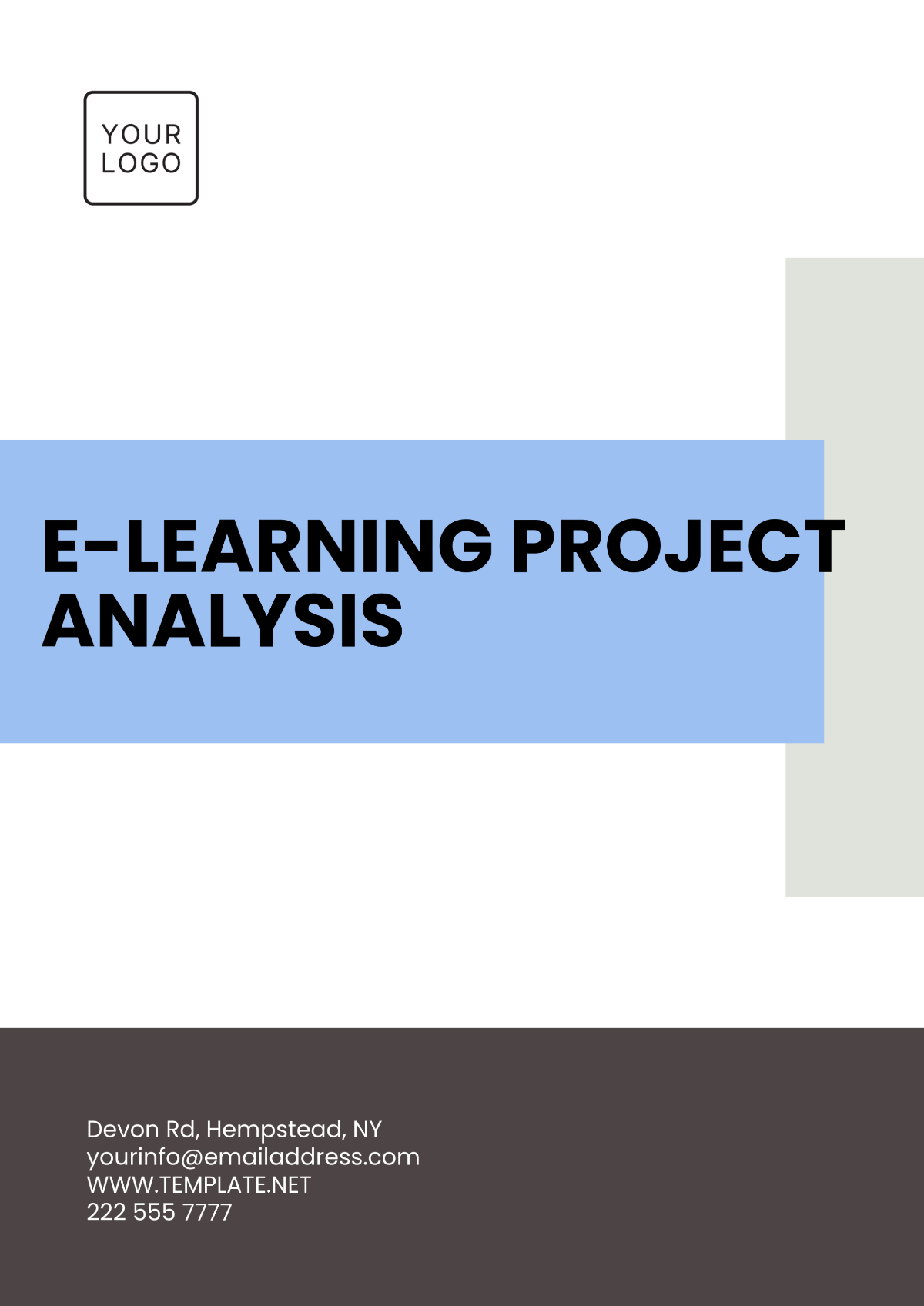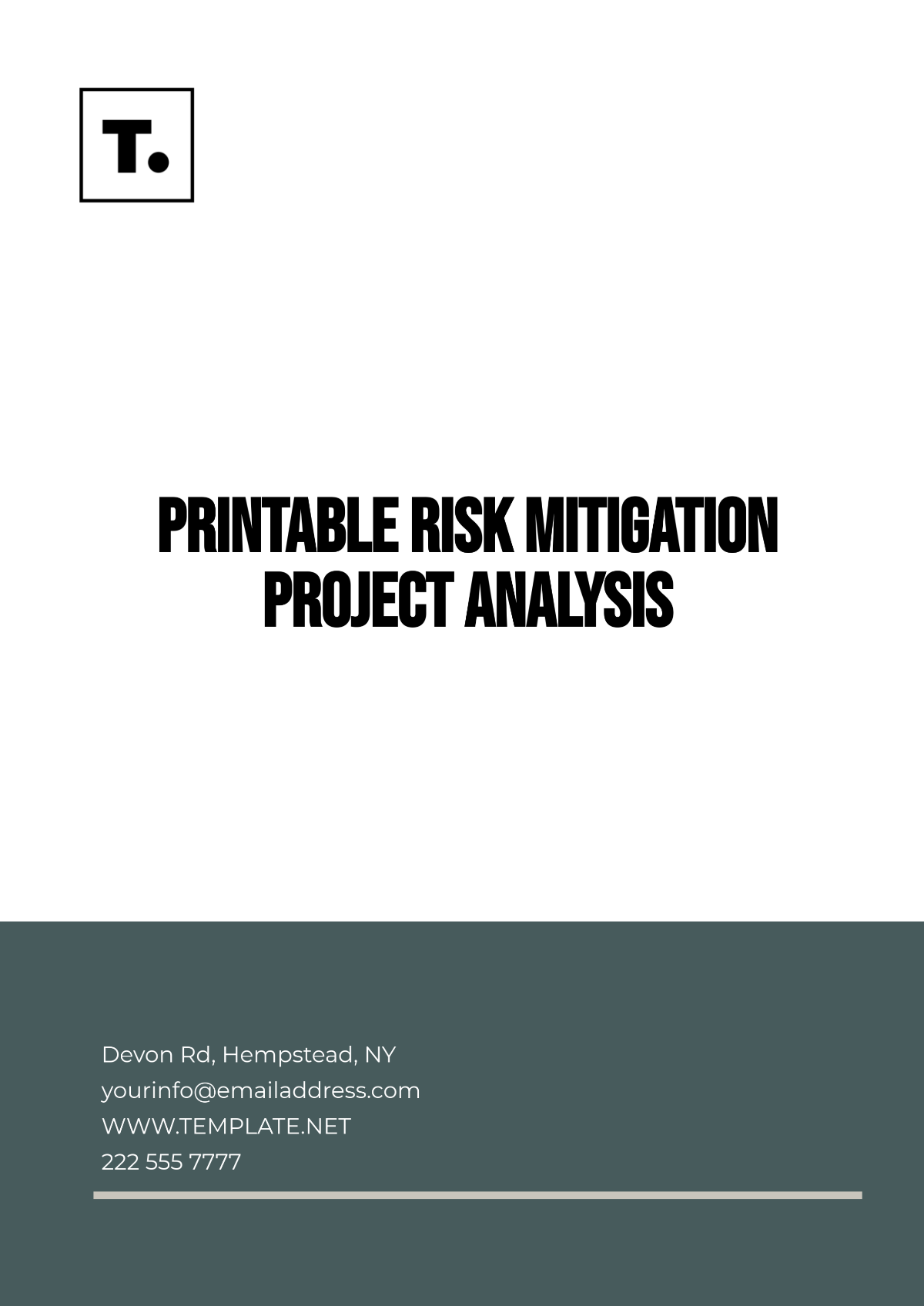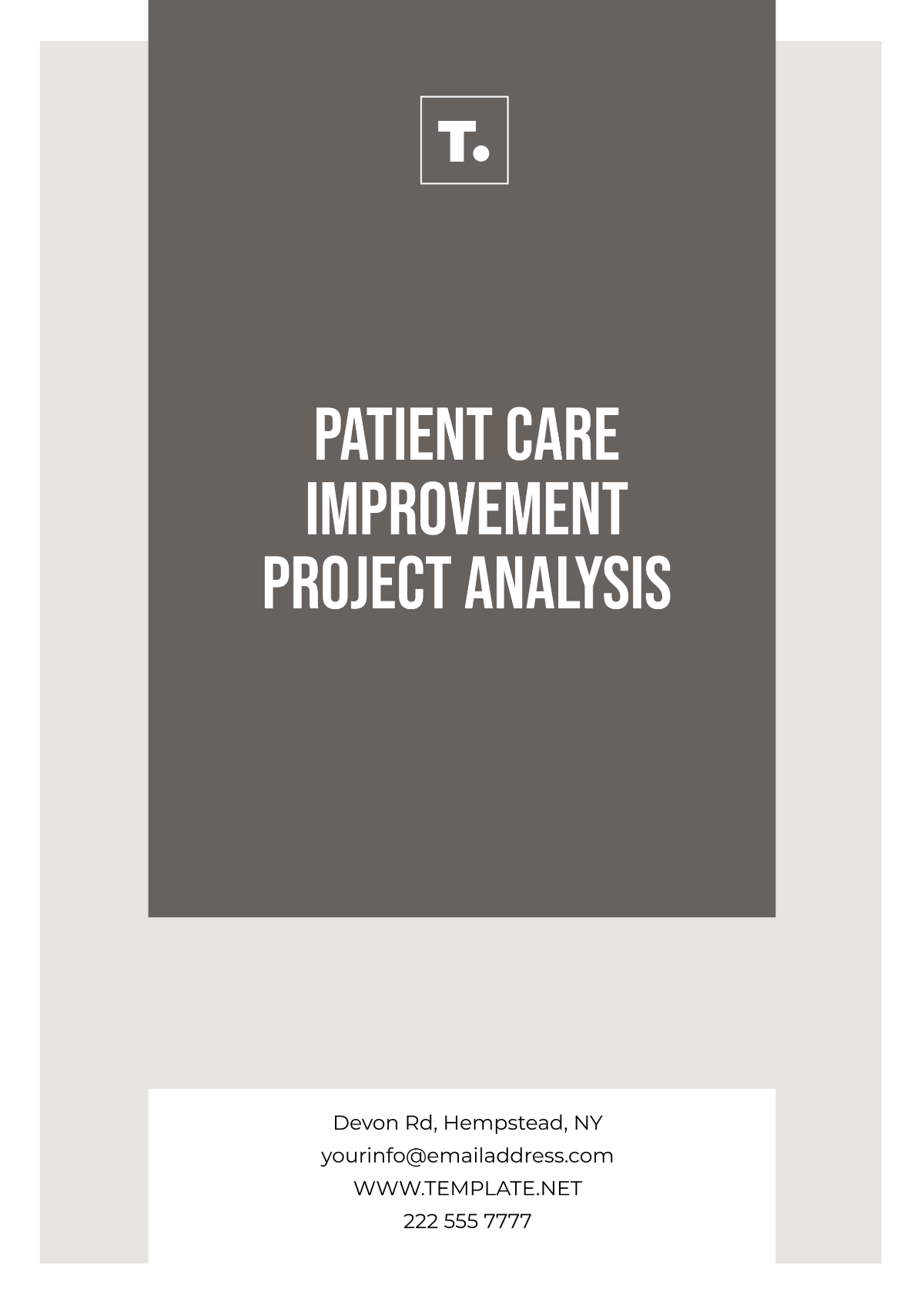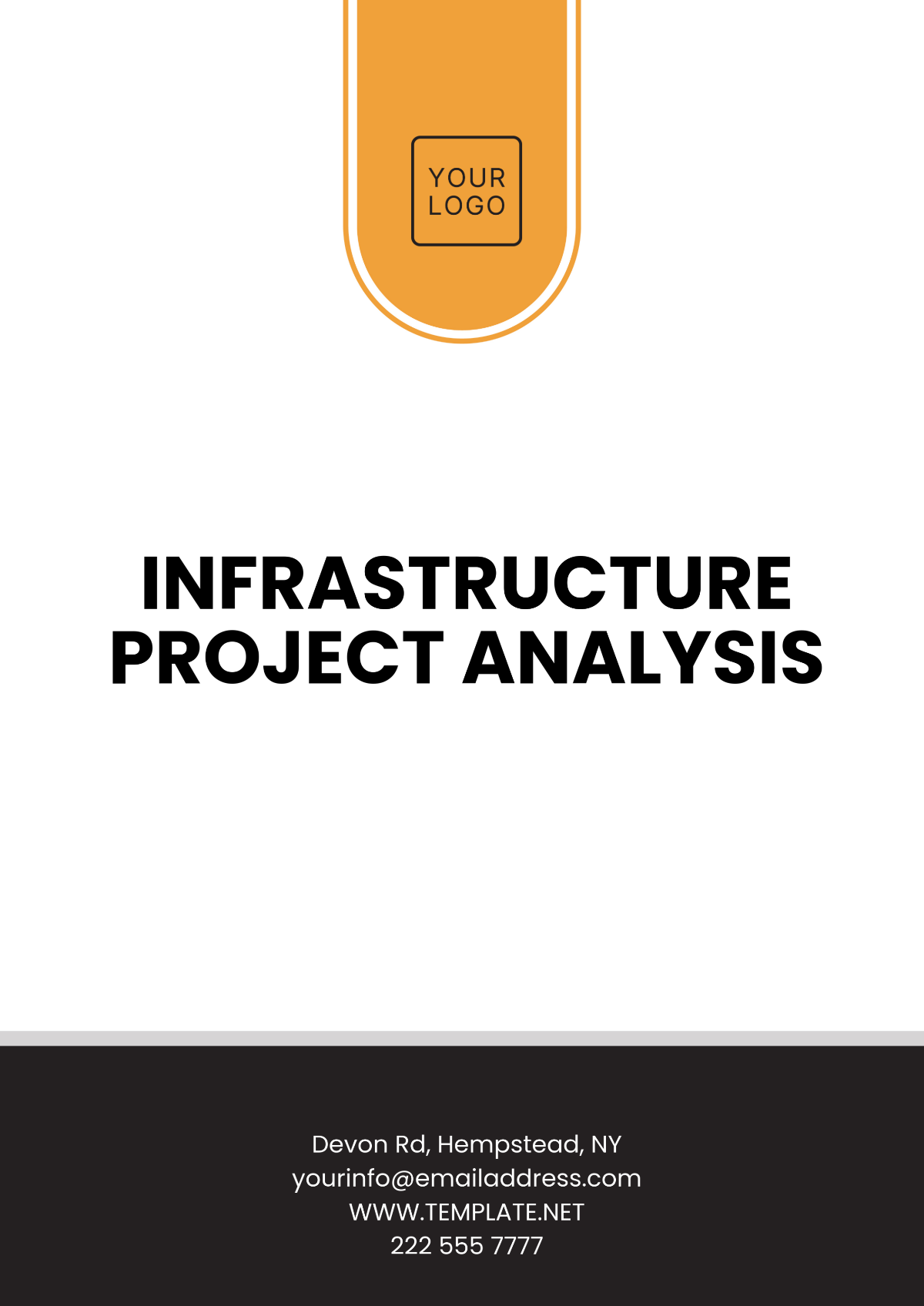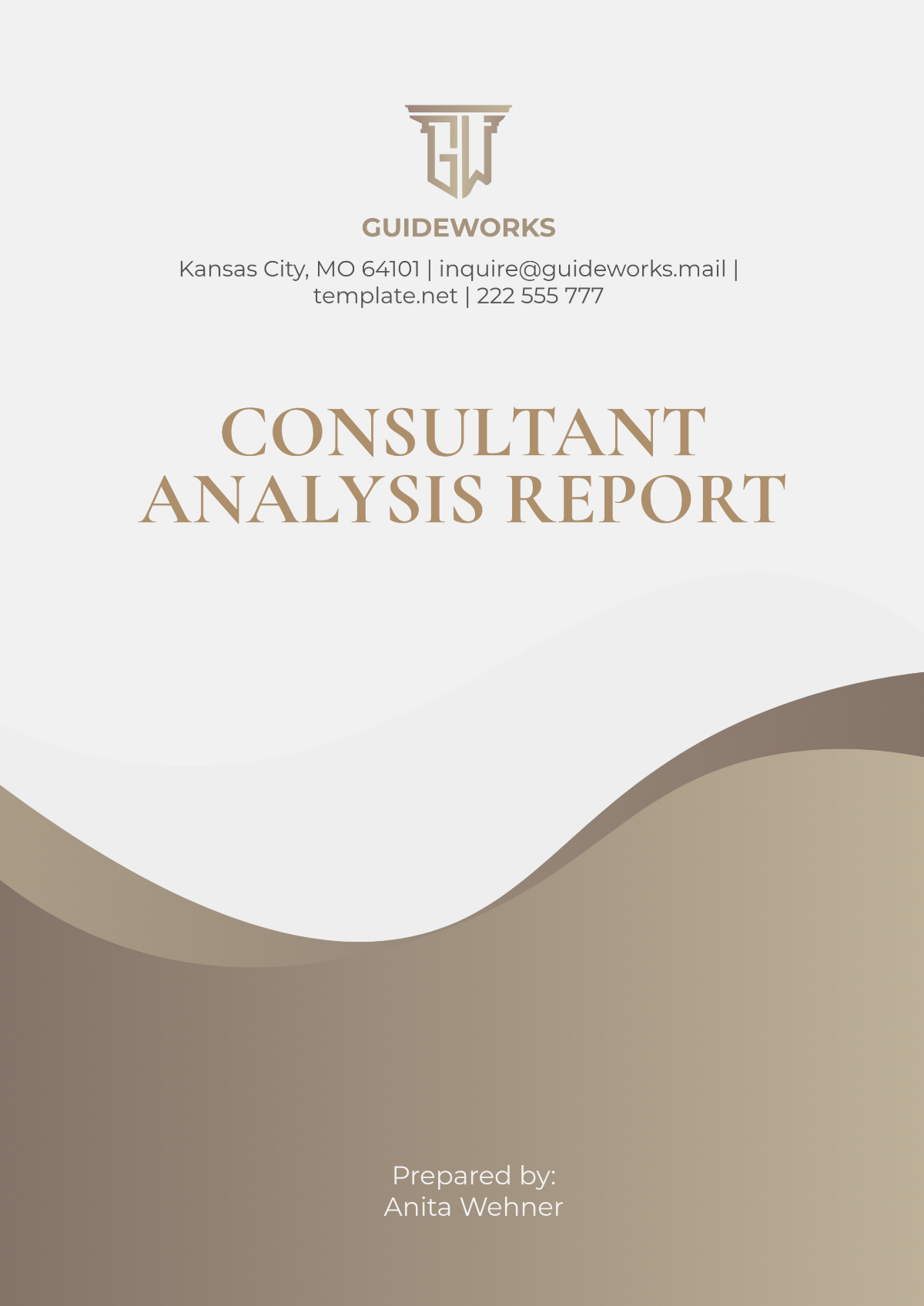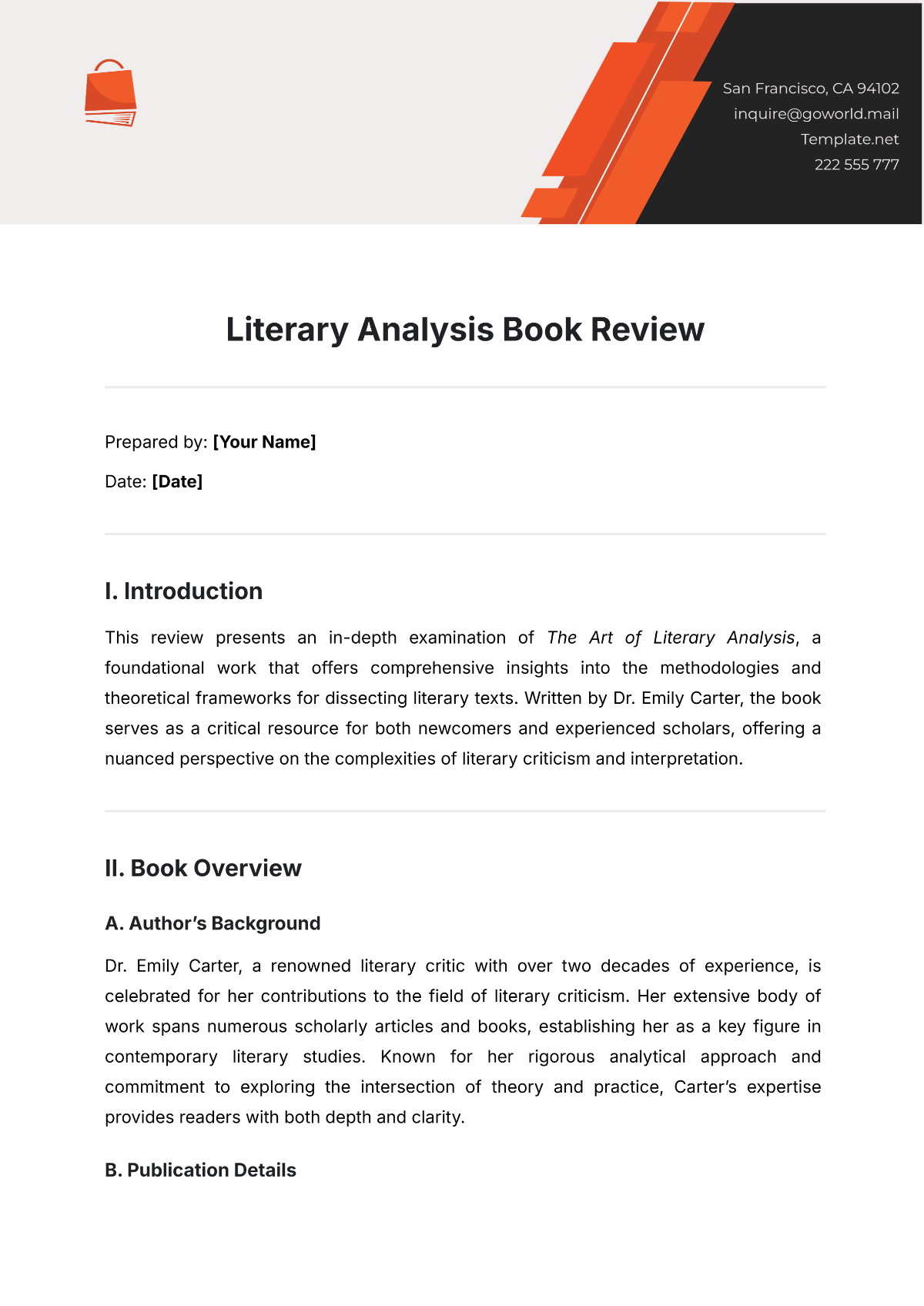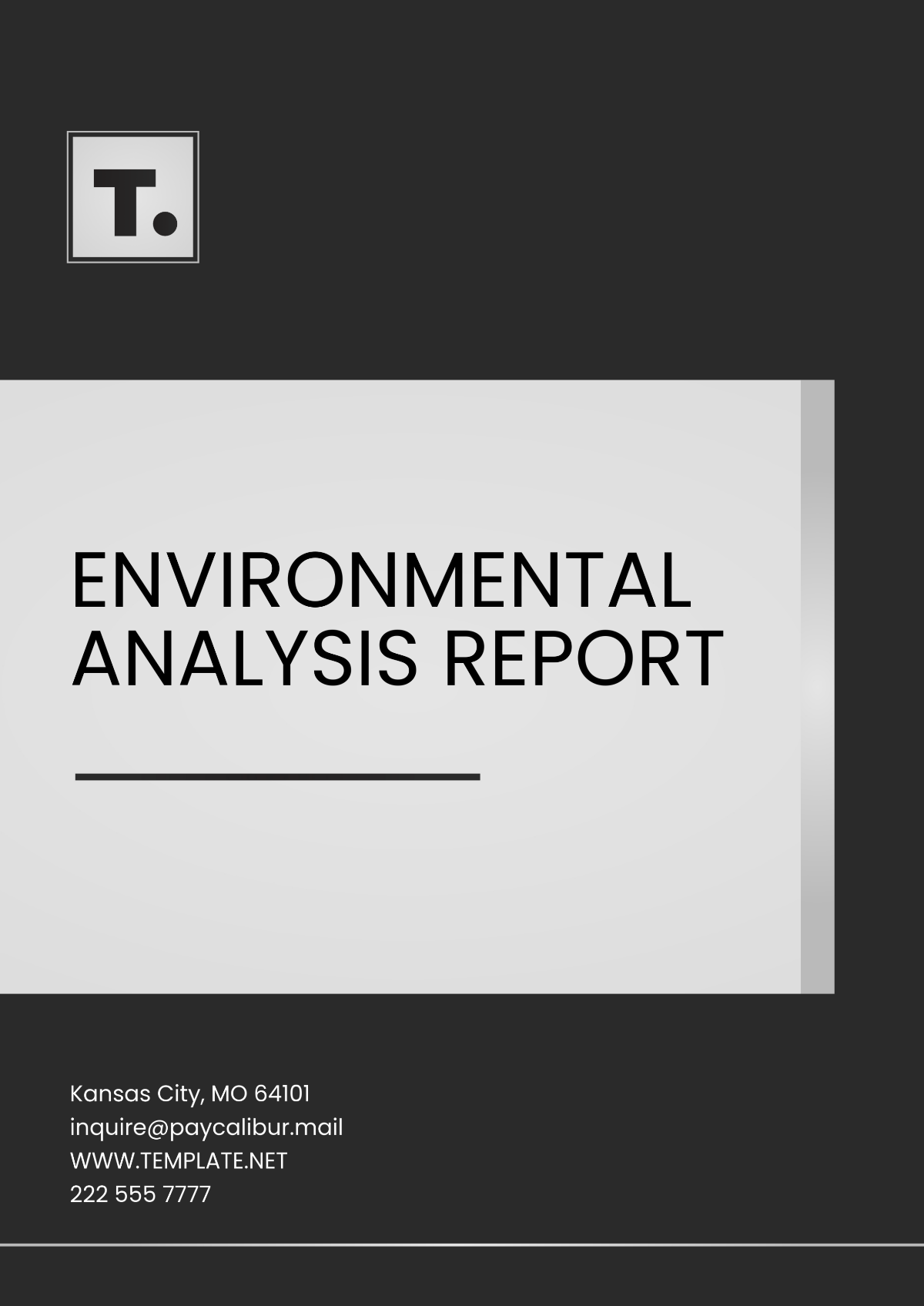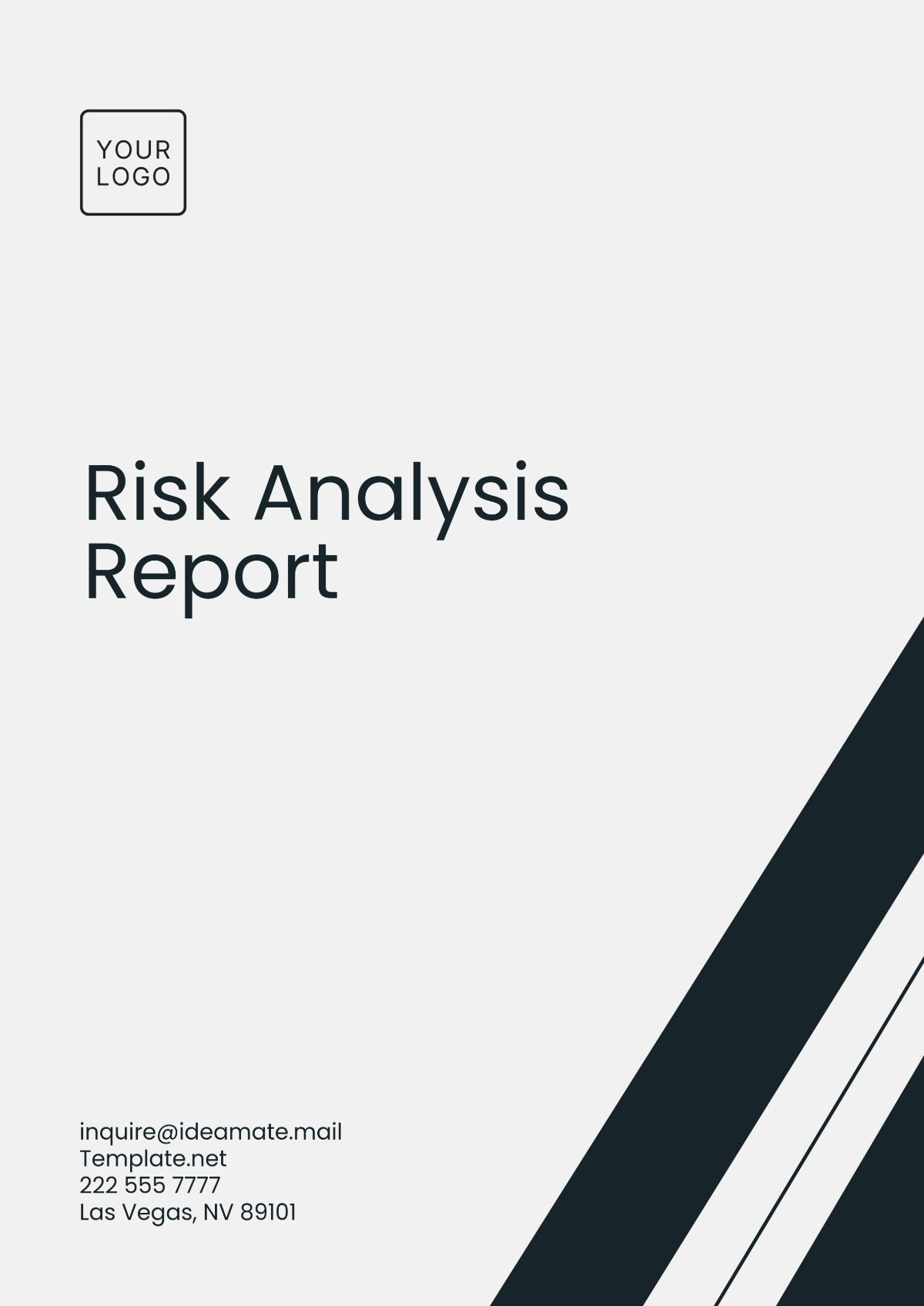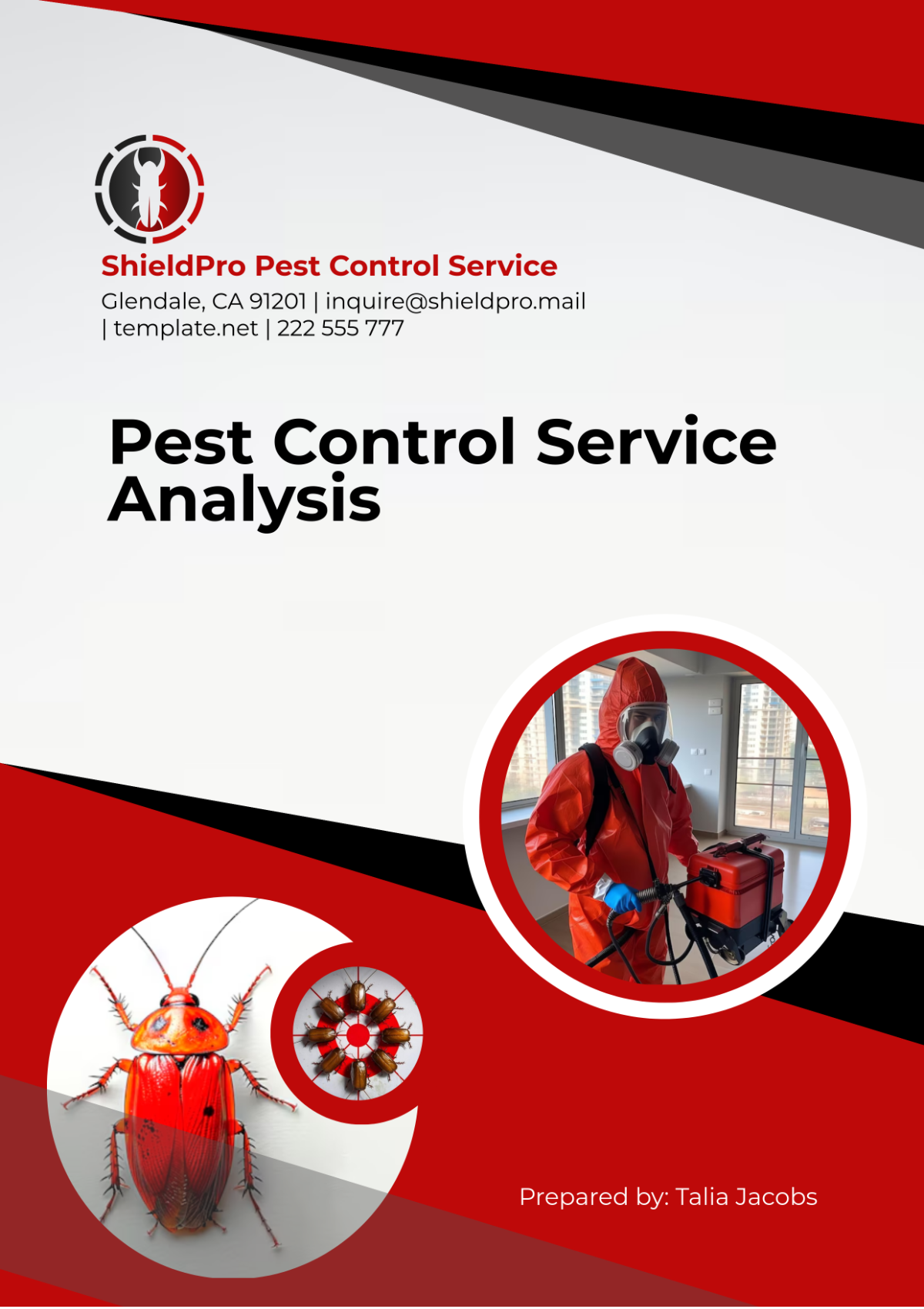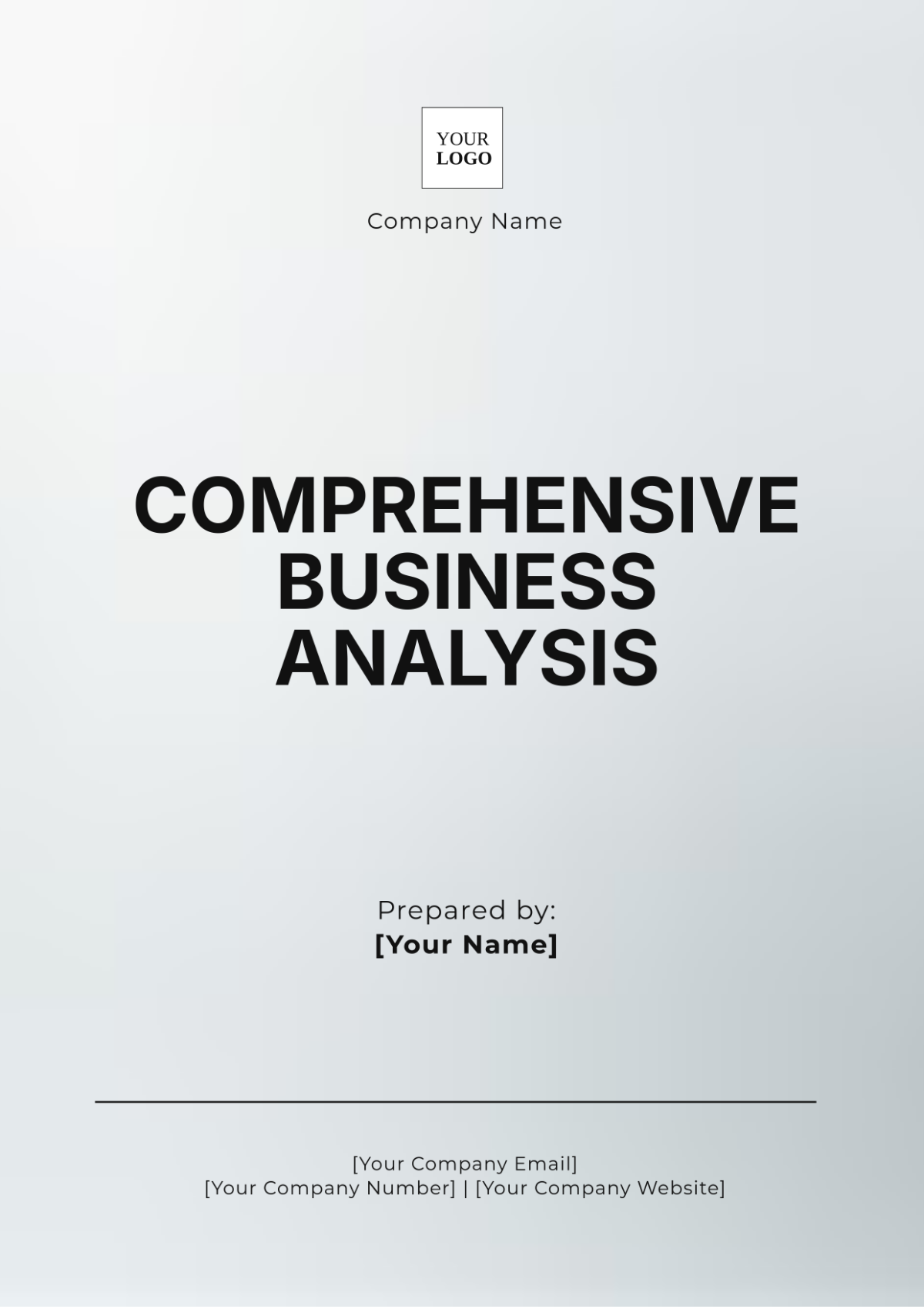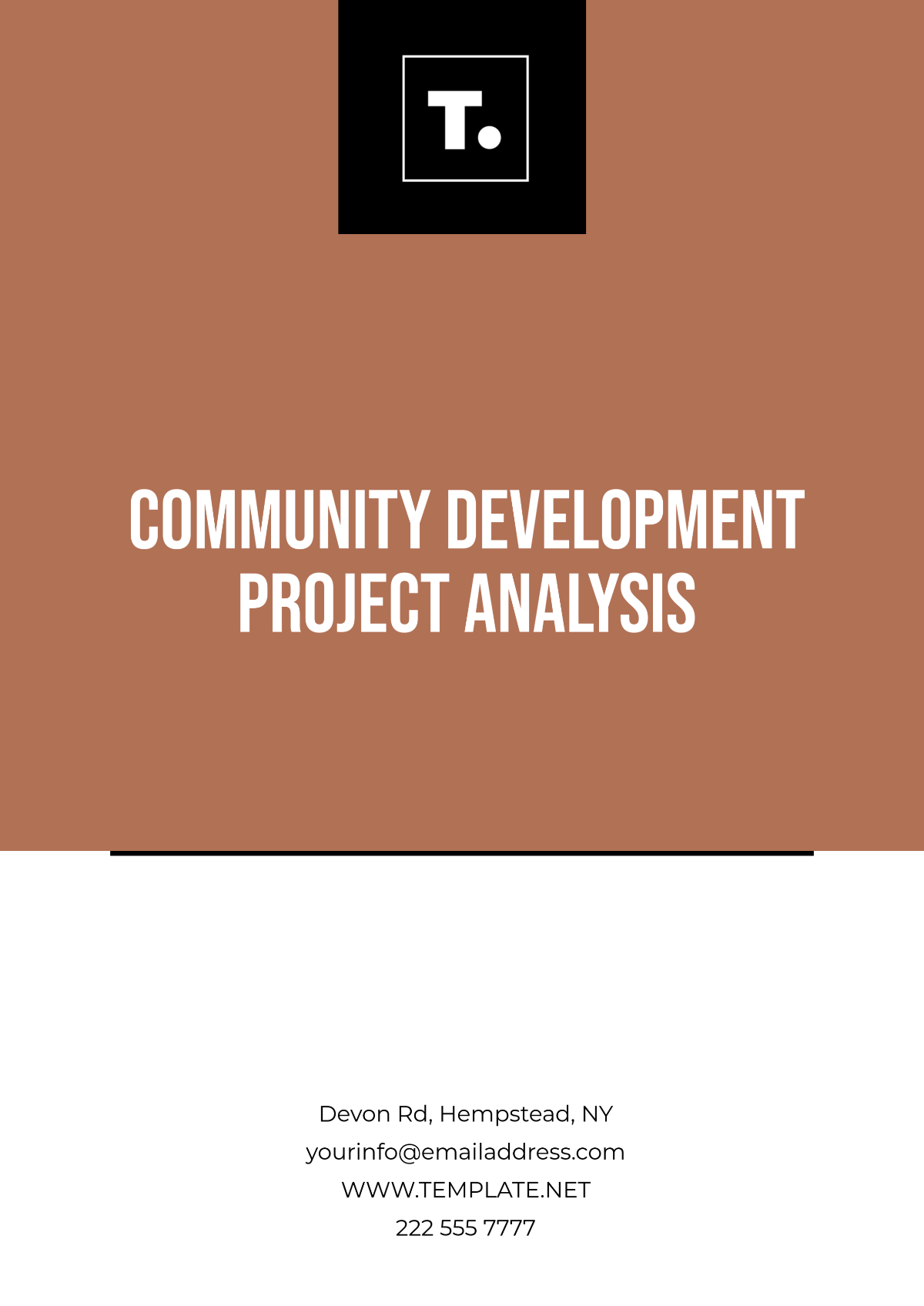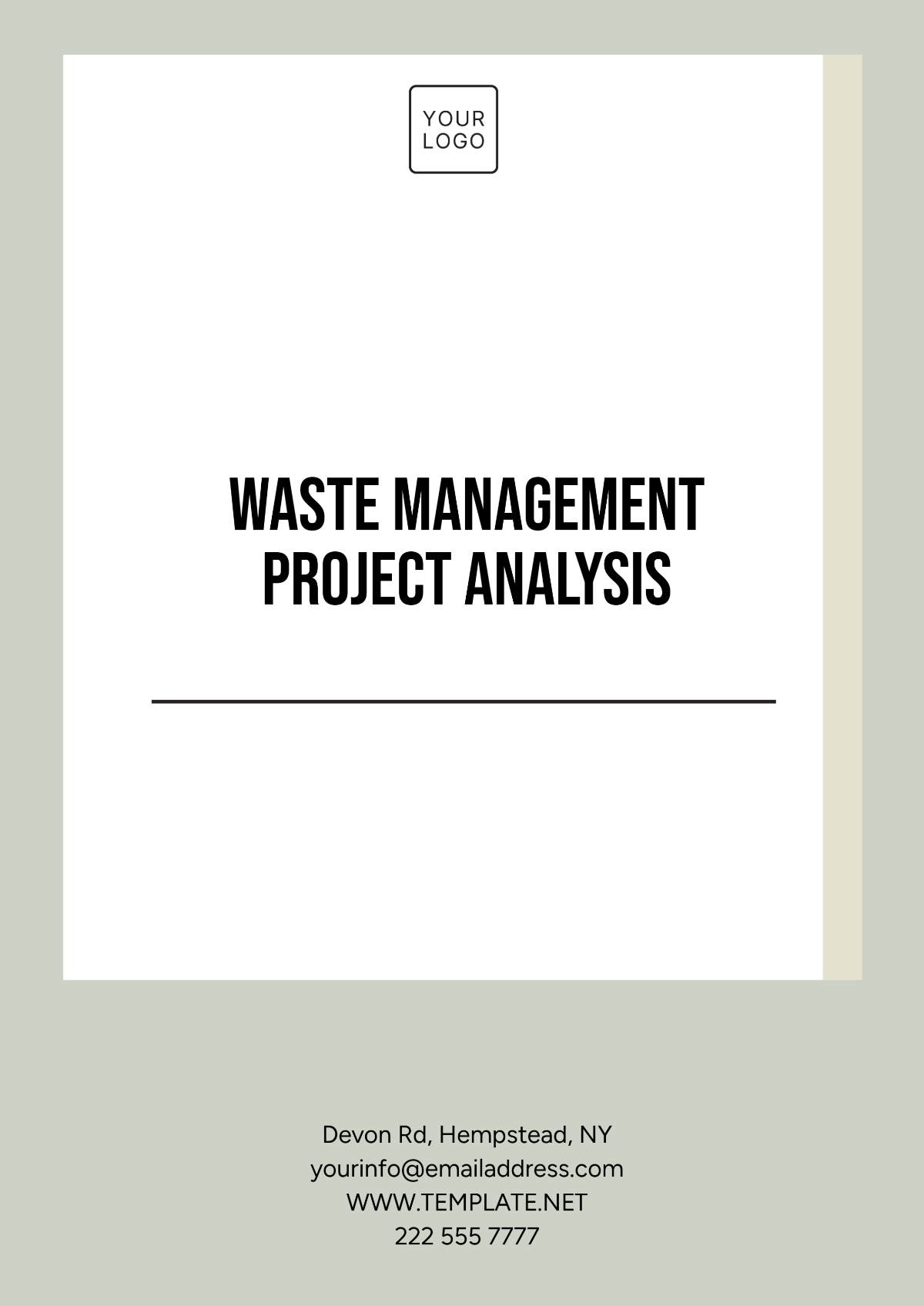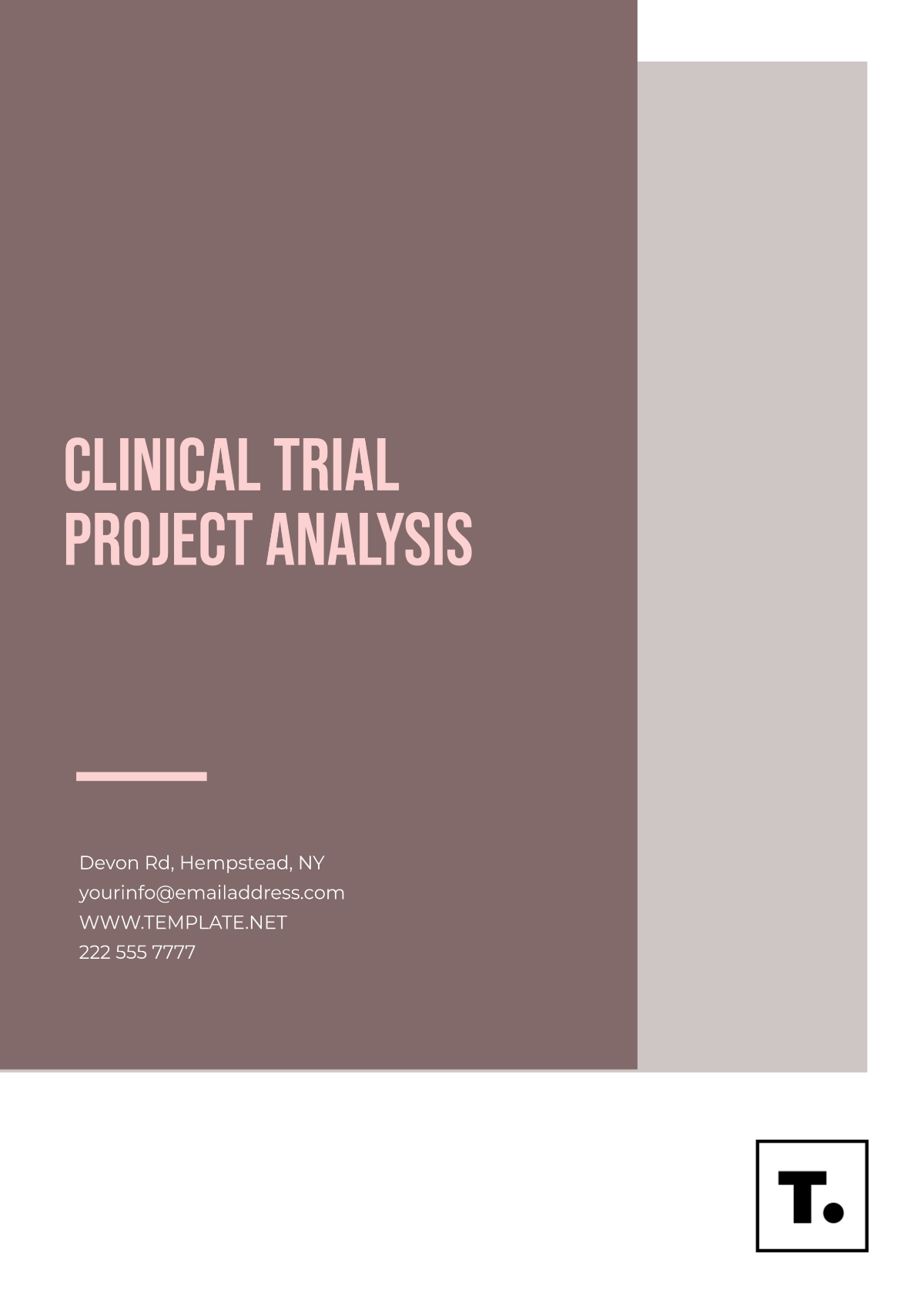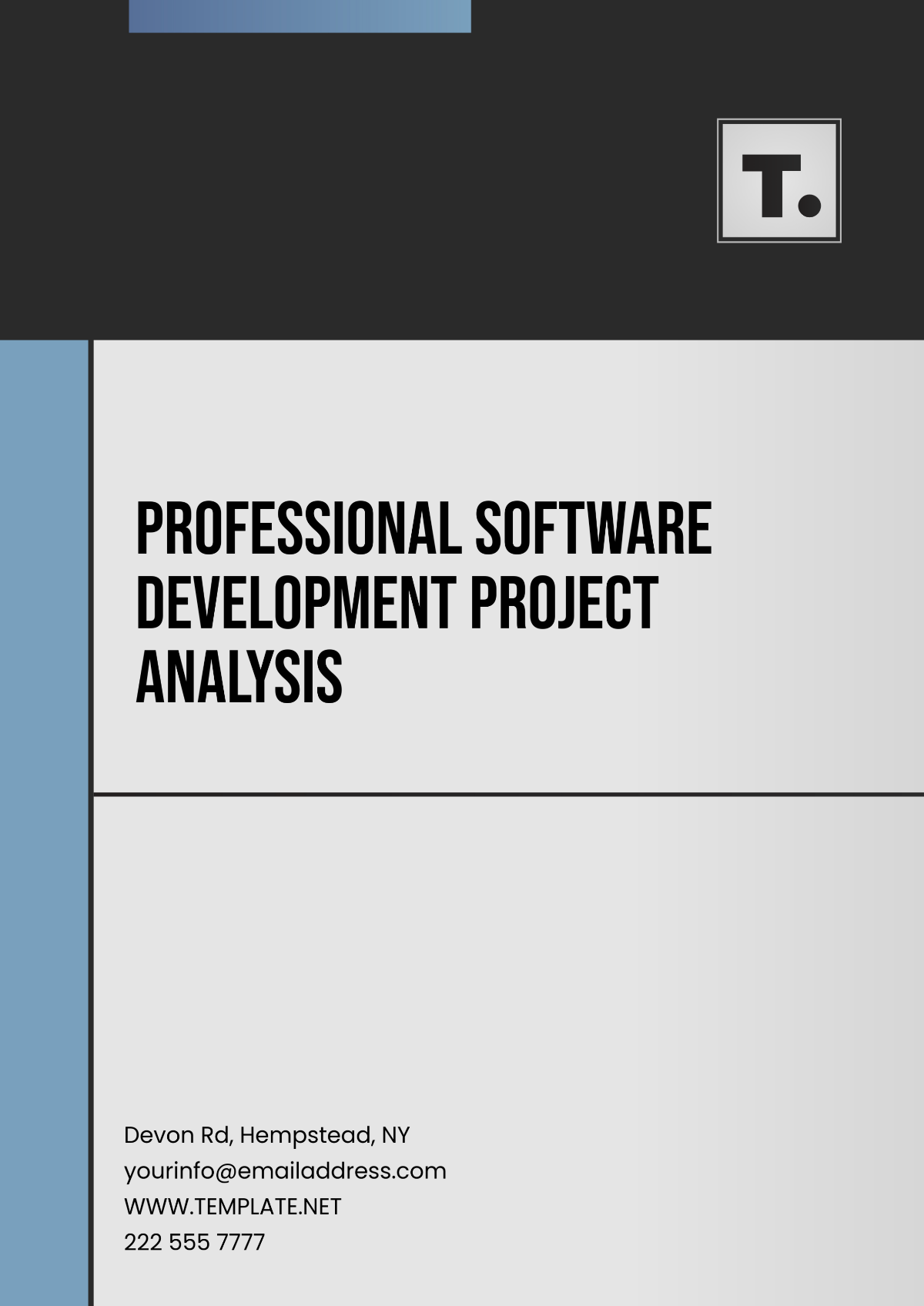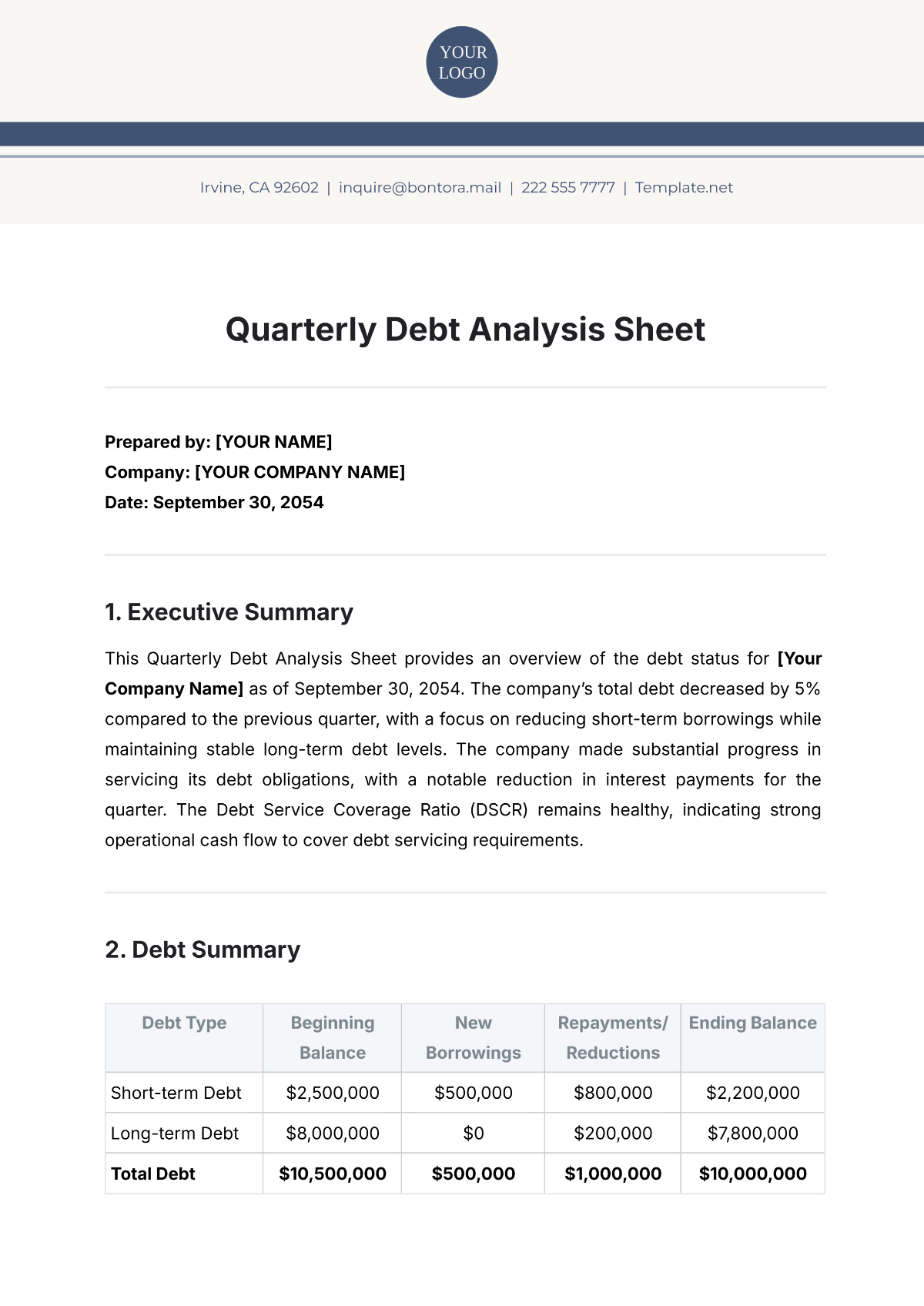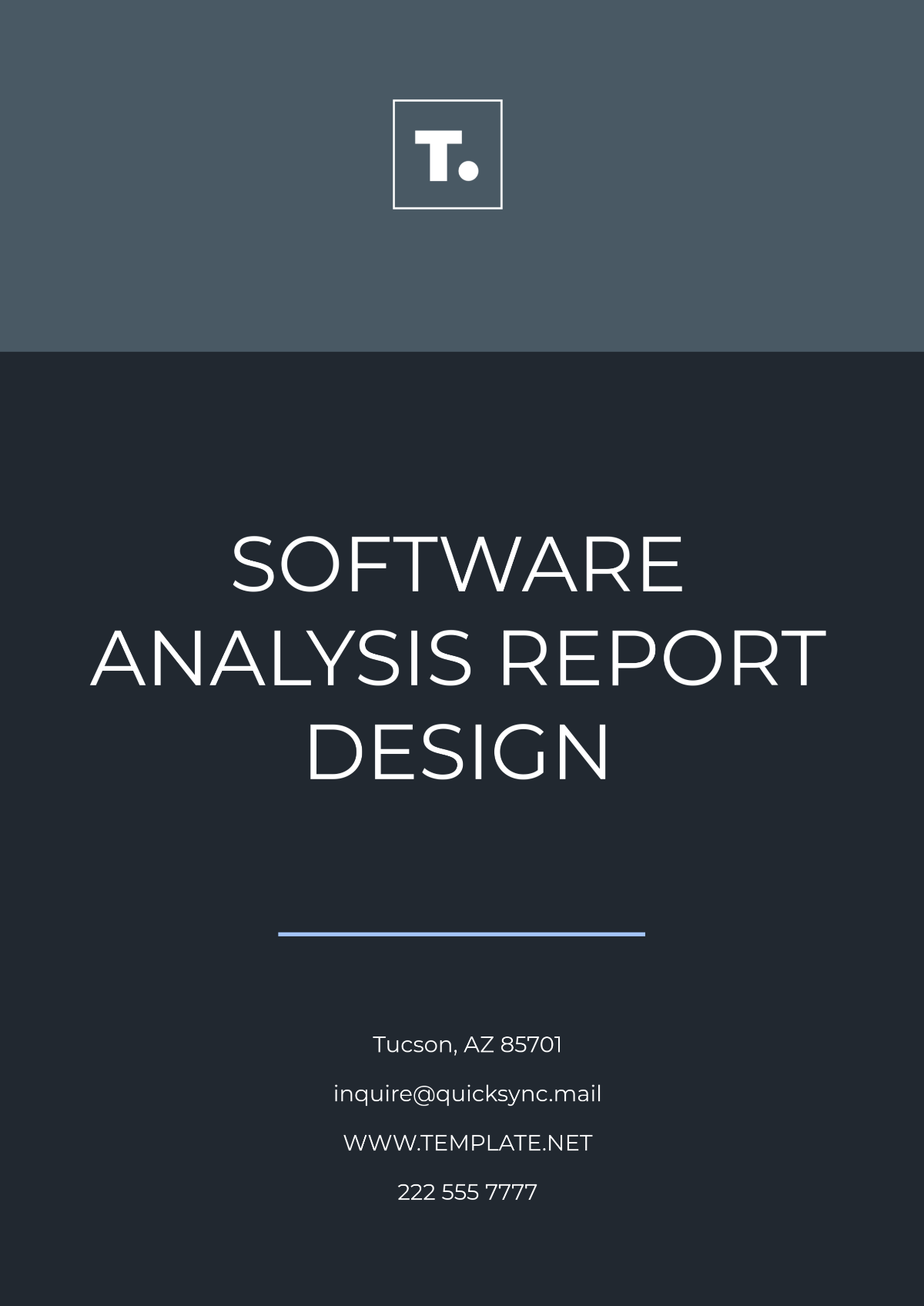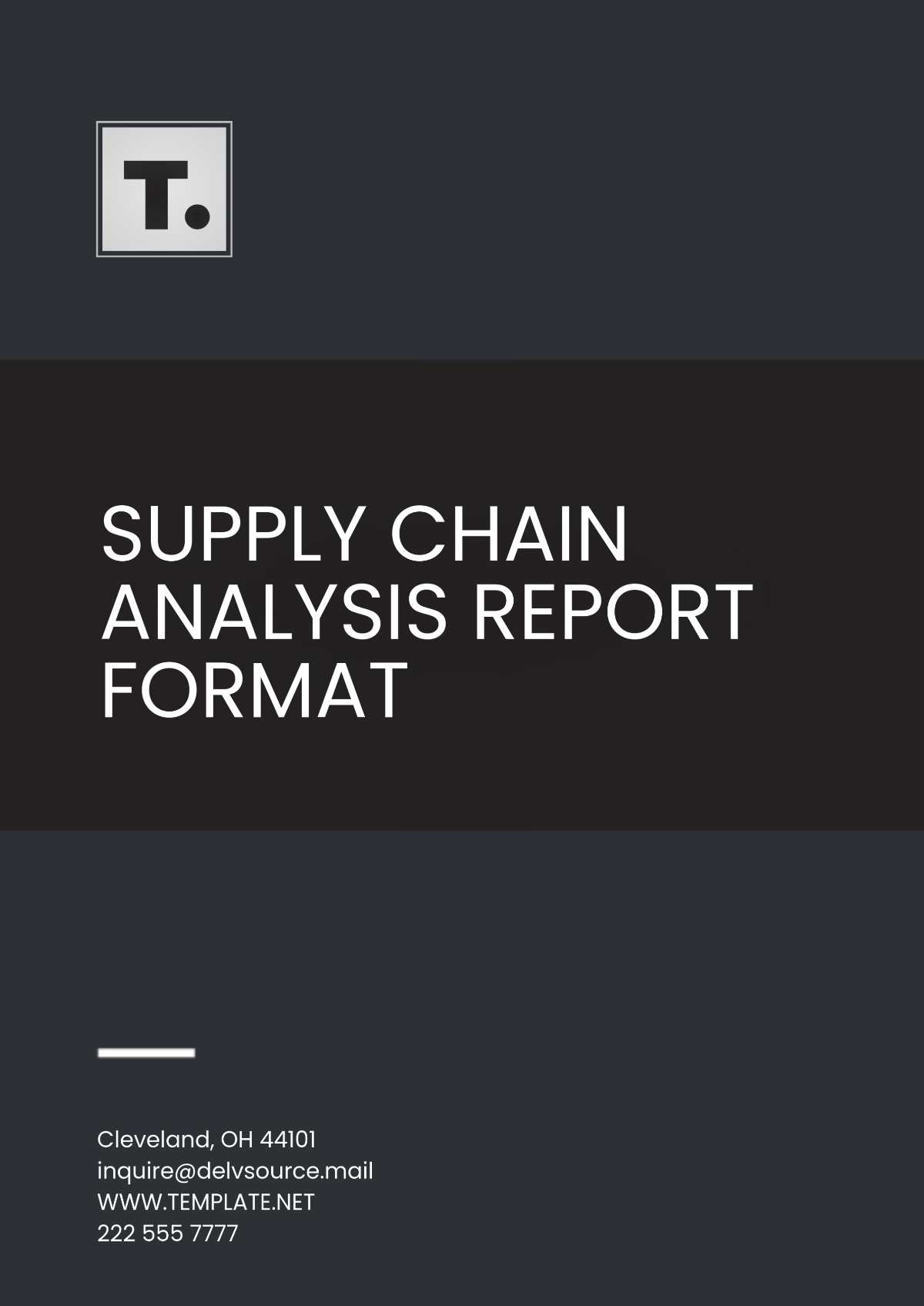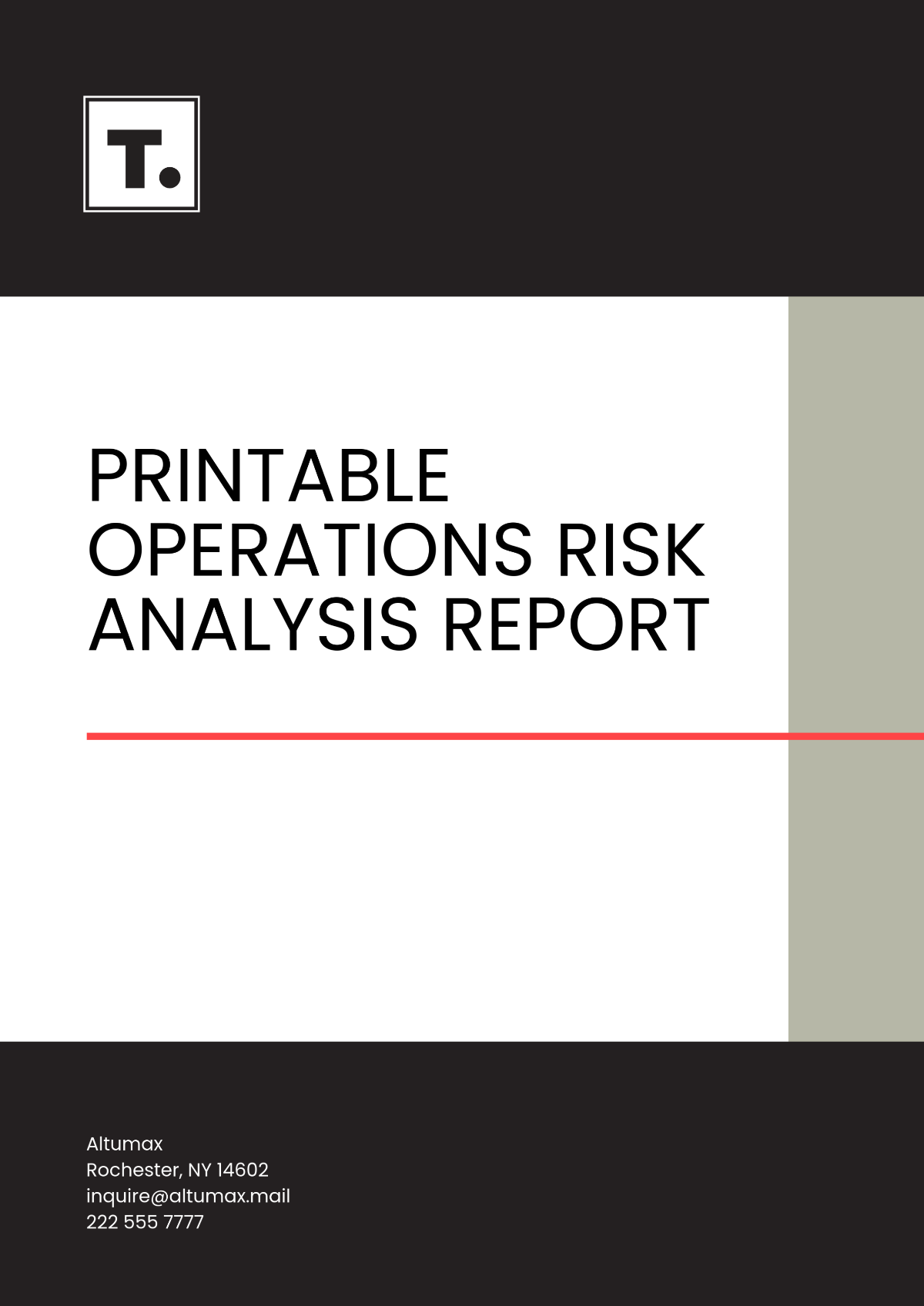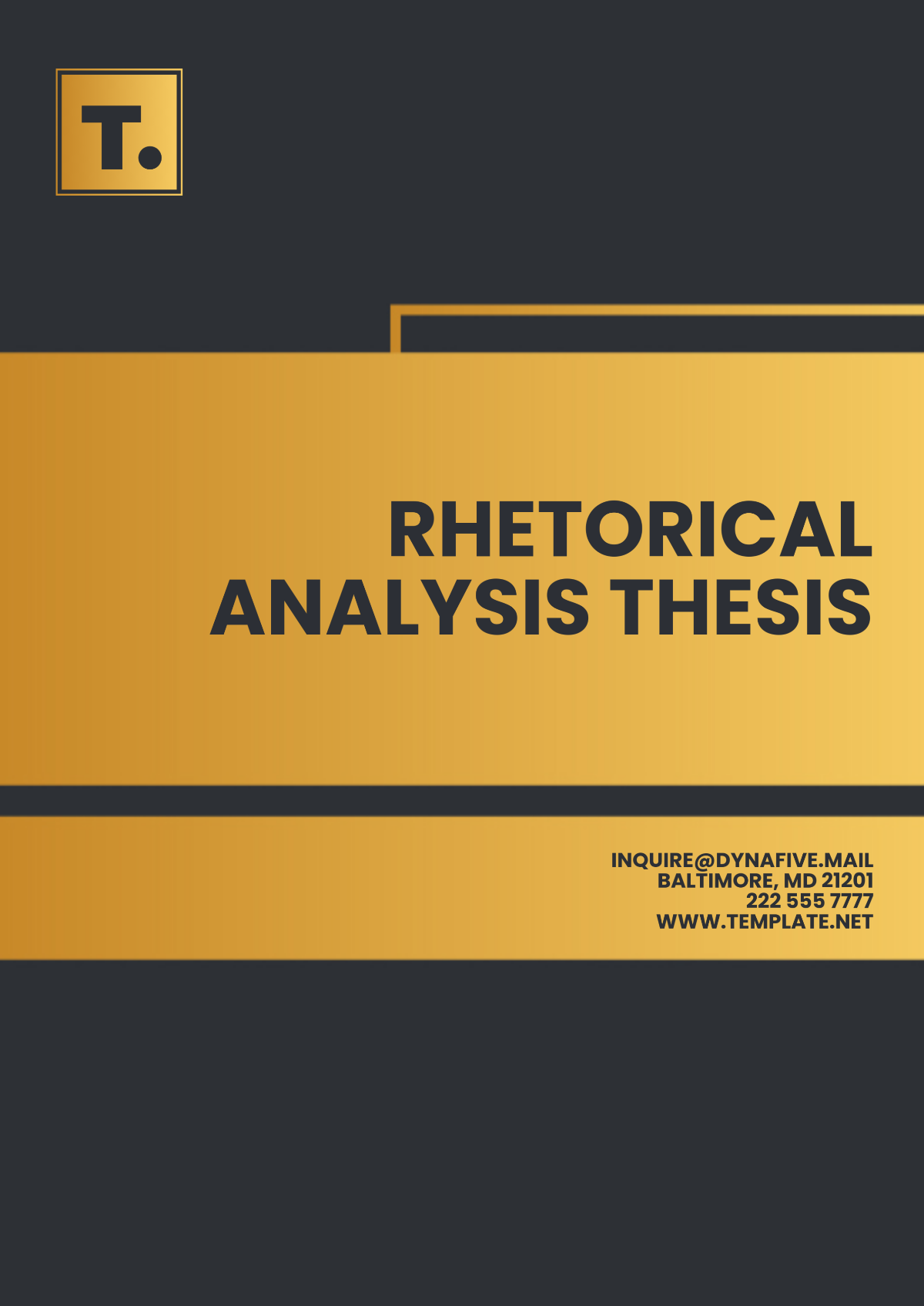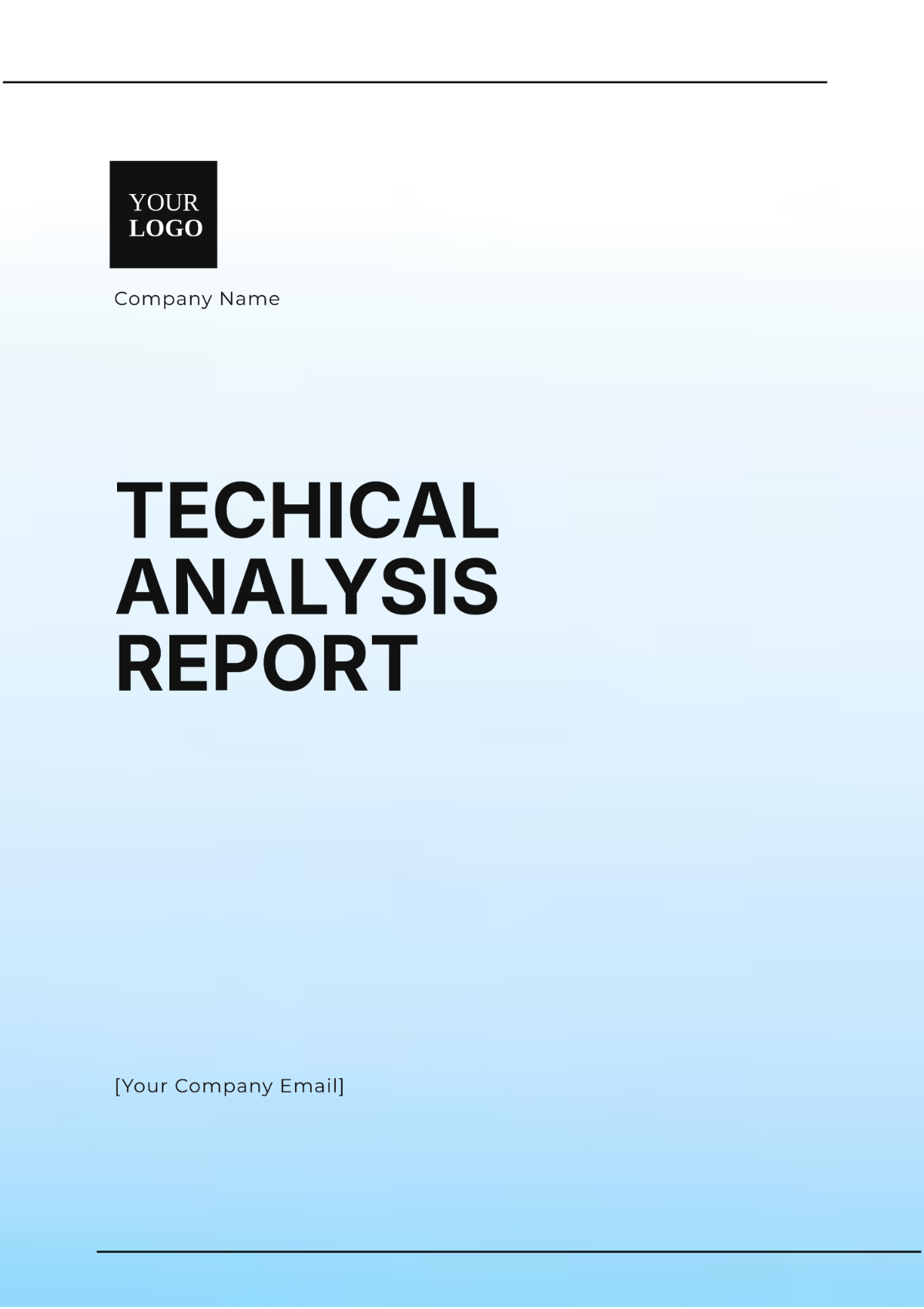School Task Analysis
I. Introduction
A. Purpose of Task Analysis
The purpose of this Task Analysis is to systematically examine and break down the various tasks performed within [Your Company Name] to enhance the overall efficiency and effectiveness of our educational environment. By understanding the components of each task, we aim to identify areas of improvement, streamline processes, and ensure that all activities align with our educational goals. This analysis will serve as a foundational tool for enhancing our academic, administrative, and extracurricular functions.
B. Importance of Task Analysis in Educational Settings
Task analysis is crucial in educational settings as it provides a detailed understanding of the tasks performed by educators, administrators, and students. It helps in identifying the specific steps involved in each task, the skills required, and the potential challenges. By conducting a thorough task analysis, [Your Company Name] can ensure that all tasks are performed efficiently, resources are utilized effectively, and the overall educational experience is improved. This process also supports the professional development of staff and enhances student learning outcomes.
C. Scope of the Analysis
The scope of this task analysis encompasses a wide range of activities within [Your Company Name], including academic, administrative, and extracurricular tasks. It covers tasks performed by teachers, administrative staff, and students, ensuring a comprehensive understanding of the operational dynamics within the school. The analysis will focus on key tasks that are critical to the functioning our school, aiming to provide actionable insights and recommendations for improvement.
II. Task Identification
A. List of Tasks
A thorough identification of tasks is essential for a detailed analysis. Below is a categorized list of tasks performed within [Your Company Name]:
Academic Tasks
Lesson Planning
Classroom Instruction
Student Assessment and Grading
Homework Assignment and Review
Curriculum Development
Administrative Tasks
Student Enrollment
Attendance Monitoring
Report Generation
Budget Management
Communication with Parents
Extracurricular Tasks
Club Meetings
Sports Practices
Event Planning
Field Trips
Student Council Activities
B. Task Selection Criteria
The tasks selected for this analysis were chosen based on their frequency, impact on educational outcomes, and the resources they consume. By focusing on these criteria, we ensure that the analysis addresses the most critical and resource-intensive activities within the school.
C. Objectives of Each Task
Each task within the school environment serves a specific purpose and contributes to the overall educational mission of [Your Company Name]. Below are the objectives of the key tasks identified:
Lesson Planning: To prepare structured and engaging lessons that align with the curriculum and educational standards.
Classroom Instruction: To deliver knowledge and facilitate learning in an interactive and effective manner.
Student Assessment and Grading: To evaluate student performance and provide feedback that supports academic growth.
Homework Assignment and Review: To reinforce classroom learning and assess student understanding outside of class hours.
Curriculum Development: To design a comprehensive and cohesive curriculum that meets the educational needs of students.
III. Task Description
A. Detailed Description of Selected Tasks
A detailed description of each selected task is crucial for understanding its complexity and requirements. Below are the descriptions of some key tasks:
Lesson Planning
Task Title: Lesson Planning
Task Description: Lesson planning involves creating detailed outlines for daily instructional activities. This includes setting learning objectives, designing activities, preparing materials, and aligning lessons with the curriculum standards. Teachers must consider various learning styles and student needs to ensure that lessons are inclusive and effective.
Task Complexity: High, due to the need for comprehensive content knowledge, creativity, and adaptability.
Required Resources: Curriculum guides, teaching materials, technology resources, and professional development support.
Classroom Instruction
Task Title: Classroom Instruction
Task Description: Classroom instruction involves delivering educational content to students through lectures, discussions, hands-on activities, and multimedia presentations. Effective instruction requires strong communication skills, classroom management, and the ability to engage students actively in the learning process.
Task Complexity: High, due to the dynamic nature of the classroom environment and the need to address diverse student needs.
Required Resources: Teaching aids, technology tools, classroom supplies, and support from teaching assistants.
Student Assessment and Grading
Task Title: Student Assessment and Grading
Task Description: This task involves creating and administering assessments, grading student work, and providing feedback. Assessments can include tests, quizzes, projects, and presentations. Teachers must ensure that assessments are fair, unbiased, and aligned with learning objectives.
Task Complexity: Medium to high, depending on the type of assessment and the number of students.
Required Resources: Assessment tools, grading software, and student performance data.
IV. Task Breakdown
A. Steps Involved in Each Task
Understanding the sequence of steps involved in each task is essential for identifying potential areas of improvement. Below is a breakdown of the steps for key tasks:
Lesson Planning
Review Curriculum Standards
Define Learning Objectives
Design Instructional Activities
Prepare Teaching Materials
Align Lessons with Student Needs
Review and Revise Plans
Classroom Instruction
Introduce the Lesson Topic
Deliver Instructional Content
Facilitate Student Activities
Monitor and Support Student Learning
Assess Understanding and Provide Feedback
Adjust Instruction as Needed
Student Assessment and Grading
Develop Assessment Criteria
Create Assessment Tools
Administer Assessments
Grade Student Work
Provide Feedback to Students
Record and Analyze Results
B. Sequence of Steps
The sequence of steps ensures that each task is performed systematically and efficiently. For instance, in lesson planning, starting with curriculum review ensures that all subsequent activities align with educational standards. Similarly, in classroom instruction, introducing the lesson topic sets the stage for effective content delivery.
C. Time Required for Each Step
The time required for each step can vary based on the complexity of the task and the resources available. Below is an estimation of the time needed for key steps:
Task | Step | Estimated Time |
|---|---|---|
Lesson Planning | Review Curriculum Standards | 1 hour |
Define Learning Objectives | 1 hour | |
Design Instructional Activities | 2 hours | |
Prepare Teaching Materials | 2 hours | |
Classroom Instruction | Introduce the Lesson Topic | 10 minutes |
Deliver Instructional Content | 40 minutes | |
Facilitate Student Activities | 30 minutes | |
Student Assessment | Develop Assessment Criteria | 1 hour |
and Grading | Create Assessment Tools | 2 hours |
Administer Assessments | 1 hour | |
Grade Student Work | 3 hours |
D. Roles and Responsibilities
Each task involves specific roles and responsibilities. Below is an outline of key roles for selected tasks:
Lesson Planning
Teachers: Lead the planning process, create lesson plans, and prepare materials.
Curriculum Coordinators: Provide guidance on curriculum standards and support teachers in aligning lessons.
Teaching Assistants: Assist with the preparation of materials and provide input on lesson activities.
Classroom Instruction
Teachers: Deliver instructional content, manage the classroom, and facilitate student activities.
Teaching Assistants: Support teachers in classroom management and assist students during activities.
Students: Actively participate in learning activities and provide feedback.
Student Assessment and Grading
Teachers: Develop and administer assessments, grade student work, and provide feedback.
Assessment Coordinators: Ensure that assessments align with standards and support teachers in the grading process.
Students: Complete assessments and reflect on feedback to improve performance.
V. Task Performance Analysis
A. Performance Criteria
Establishing performance criteria is essential for evaluating the effectiveness of each task. These criteria ensure that tasks are performed to the highest standards and contribute positively to the educational environment. For example, performance criteria for lesson planning may include alignment with curriculum standards, the inclusivity of lesson plans, and the engagement level of instructional activities.
B. Methods of Evaluation
Evaluating task performance requires a combination of qualitative and quantitative methods. Observations, surveys, and performance data can be used to assess how well tasks are performed. For instance, classroom instruction can be evaluated through classroom observations, student feedback, and analysis of student performance data.
C. Tools and Techniques for Analysis
Various tools and techniques can be employed to analyze task performance. These may include:
Observation Checklists: Used during classroom observations to systematically record teacher performance and student engagement.
Surveys and Questionnaires: Administered to students, teachers, and parents to gather feedback on task effectiveness.
Performance Data Analysis: Involves analyzing student assessment results, attendance records, and other relevant data to identify trends and areas for improvement.
D. Data Collection Methods
Collecting data is crucial for a thorough analysis of task performance. Methods for data collection may include:
Direct Observations: Observing teachers and students during lessons to assess instructional methods and student engagement.
Interviews: Conducting interviews with teachers, students, and parents to gather in-depth insights into task performance.
Document Review: Analyzing lesson plans, assessment tools, and other relevant documents to evaluate their effectiveness.
VI. Challenges and Obstacles
A. Common Challenges in Task Performance
Task performance within [Your Company Name] may face several common challenges, including:
Time Constraints: Teachers and staff may find it challenging to complete tasks within the allocated time, leading to rushed or incomplete work.
Resource Limitations: Limited access to educational materials, technology, and support staff can hinder task performance.
Communication Barriers: Ineffective communication between staff, students, and parents can lead to misunderstandings and delays in task completion.
Student Engagement: Maintaining student engagement and motivation in tasks can be challenging, affecting the overall effectiveness of the task.
Technological Issues: Technical difficulties with software, hardware, or internet connectivity can disrupt task performance, especially in online environments.
B. Potential Obstacles
In addition to common challenges, [Your Company Name] may face specific obstacles in task performance, such as:
Curriculum Changes: Adapting to frequent changes in curriculum standards and educational requirements can pose a challenge for teachers and staff.
Budget Constraints: Limited financial resources may restrict access to necessary materials and tools, impacting the quality of task performance.
Staff Turnover: High turnover rates among teaching and administrative staff can disrupt task continuity and quality.
Student Diversity: Catering to the diverse needs and learning styles of students requires additional effort and resources.
Regulatory Compliance: Ensuring compliance with educational regulations and standards can be complex and time-consuming.
C. Strategies to Overcome Challenges
To address these challenges and obstacles, [Your Company Name] can implement the following strategies:
Time Management Techniques: Provide training on effective time management strategies to help staff prioritize tasks and manage their workload.
Resource Allocation: Allocate resources efficiently, ensuring that staff have access to the materials and support they need to perform tasks effectively.
Improved Communication Channels: Establish clear and efficient communication channels between staff, students, and parents to reduce misunderstandings and delays.
Student Engagement Strategies: Implement innovative teaching methods and tools to enhance student engagement and motivation.
Technology Integration: Invest in reliable technology solutions and provide training to staff to minimize technical issues and enhance task performance.
VII. Improvement Strategies
A. Recommendations for Task Improvement
Based on the analysis conducted, [Your Company Name] can implement the following recommendations to improve task performance:
Professional Development: Provide ongoing professional development opportunities for staff to enhance their skills and knowledge.
Collaborative Planning: Encourage collaborative planning among teachers to share best practices and resources.
Feedback Mechanisms: Establish feedback mechanisms for students, parents, and staff to provide input on task effectiveness and areas for improvement.
Task Automation: Explore automation tools and technologies to streamline administrative tasks and reduce manual workload.
Student Support Services: Enhance student support services, such as counseling and academic assistance, to address individual student needs effectively.
B. Training and Development Needs
Identifying training and development needs is crucial for enhancing staff capabilities and improving task performance. Training programs should focus on:
Curriculum Design: Training teachers in effective curriculum design methodologies to ensure alignment with educational standards.
Technology Integration: Providing training on using technology tools and platforms to enhance teaching and learning.
Communication Skills: Offering communication skills training to improve interactions with students, parents, and colleagues.
Time Management: Providing time management training to help staff prioritize tasks and manage their workload effectively.
C. Technological Interventions
Implementing technological interventions can significantly improve task performance. [Your Company Name] can consider the following technological solutions:
Learning Management Systems (LMS): Implementing an LMS to streamline lesson planning, student assessment, and communication with students and parents.
Data Analytics Tools: Using data analytics tools to analyze student performance data and identify areas for improvement.
Virtual Classroom Platforms: Leveraging virtual classroom platforms to facilitate online learning and collaboration.
Task Management Software: Implementing task management software to track and manage tasks effectively.
D. Process Optimization
Optimizing processes can lead to more efficient task performance. [Your Company Name] can optimize processes by:
Streamlining Workflows: Identifying and eliminating unnecessary steps in workflows to reduce time and resource wastage.
Standardizing Procedures: Establishing standardized procedures for common tasks to ensure consistency and efficiency.
Feedback Loops: Implementing feedback loops to continuously improve processes based on input from stakeholders.
Performance Monitoring: Monitoring task performance metrics to identify bottlenecks and areas for improvement.
VIII. Implementation Plan
A. Action Plan for Implementing Improvements
To implement the recommended improvements, [Your Company Name] can follow this action plan:
Identify Key Improvement Areas: Prioritize key areas for improvement based on their impact on task performance.
Develop Implementation Timeline: Create a timeline for implementing each improvement, considering resource availability and other constraints.
Allocate Resources: Allocate resources, such as funding, staff, and technology, to support the implementation of improvements.
Training and Development: Conduct training programs to enhance staff skills and capabilities in line with the improvement strategies.
Monitoring and Evaluation: Establish mechanisms for monitoring and evaluating the effectiveness of the implemented improvements.
B. Timeline
The timeline for implementing the improvements should be as follows:
Training and Development: Conduct training programs within the next three months to enhance staff skills.
Technology Integration: Implement technological interventions within the next six months to streamline processes and enhance task performance.
Process Optimization: Optimize processes within the next nine months to improve efficiency and effectiveness.
C. Resource Allocation
Resource allocation for implementing the improvements should include:
Financial Resources: Allocate funds for training programs, technology acquisition, and process optimization.
Human Resources: Assign staff members to lead and participate in the implementation of improvements.
Technological Resources: Acquire and implement technological solutions as per the technological interventions recommended.
D. Monitoring and Evaluation Plan
To ensure the effectiveness of the implemented improvements, [Your Company Name] should:
Establish Key Performance Indicators (KPIs): Define KPIs to measure the impact of the improvements on task performance.
Regular Monitoring: Monitor the progress of implementation regularly and address any issues that may arise.
Feedback Mechanisms: Establish feedback mechanisms for stakeholders to provide input on the effectiveness of the improvements.
Evaluation: Evaluate the overall impact of the improvements on task performance and educational outcomes.
IX. Conclusion
The task analysis conducted for [Your Company Name] has provided valuable insights into the challenges and opportunities for improvement in task performance. By implementing the recommended strategies, our school can enhance its overall efficiency and effectiveness, leading to improved educational outcomes for students and a more productive work environment for staff.
